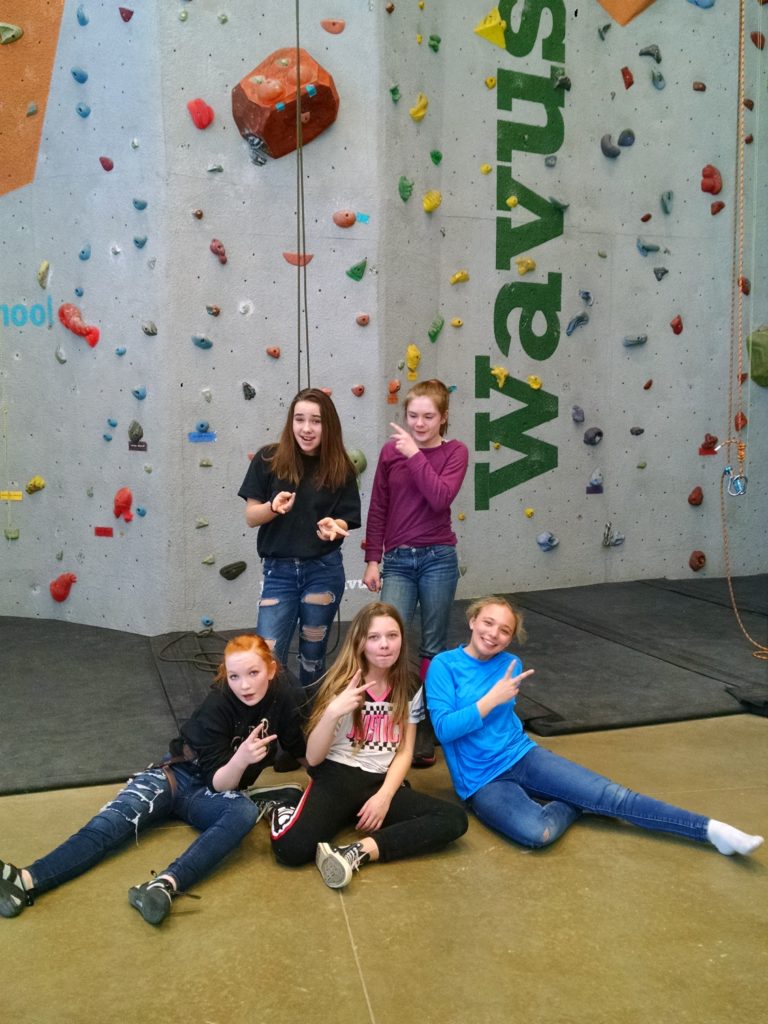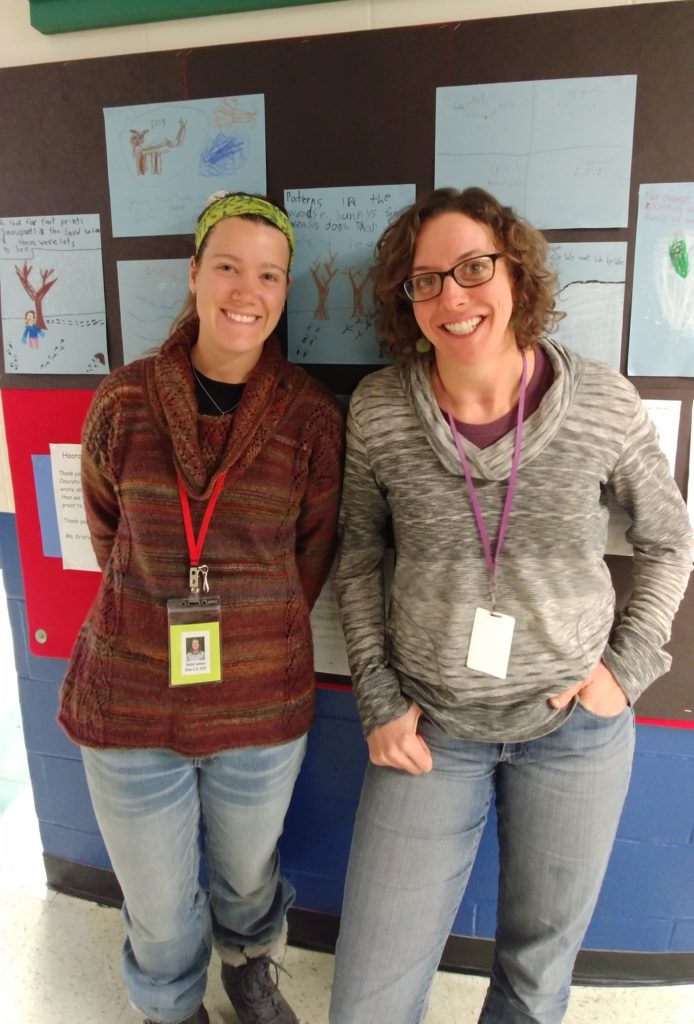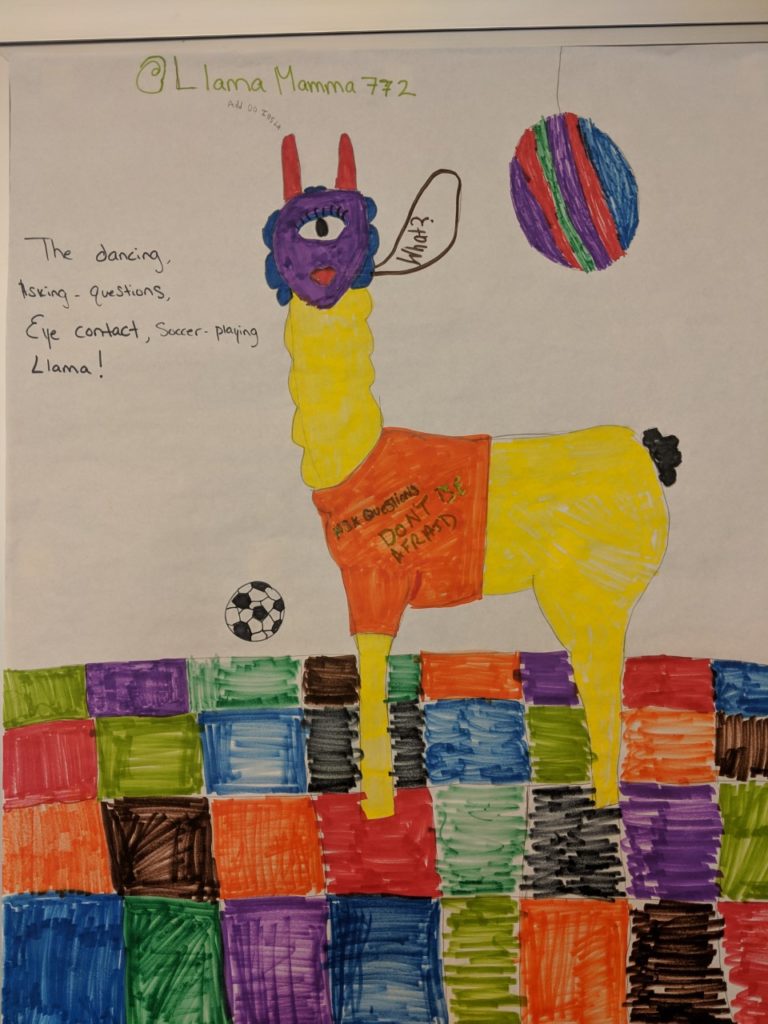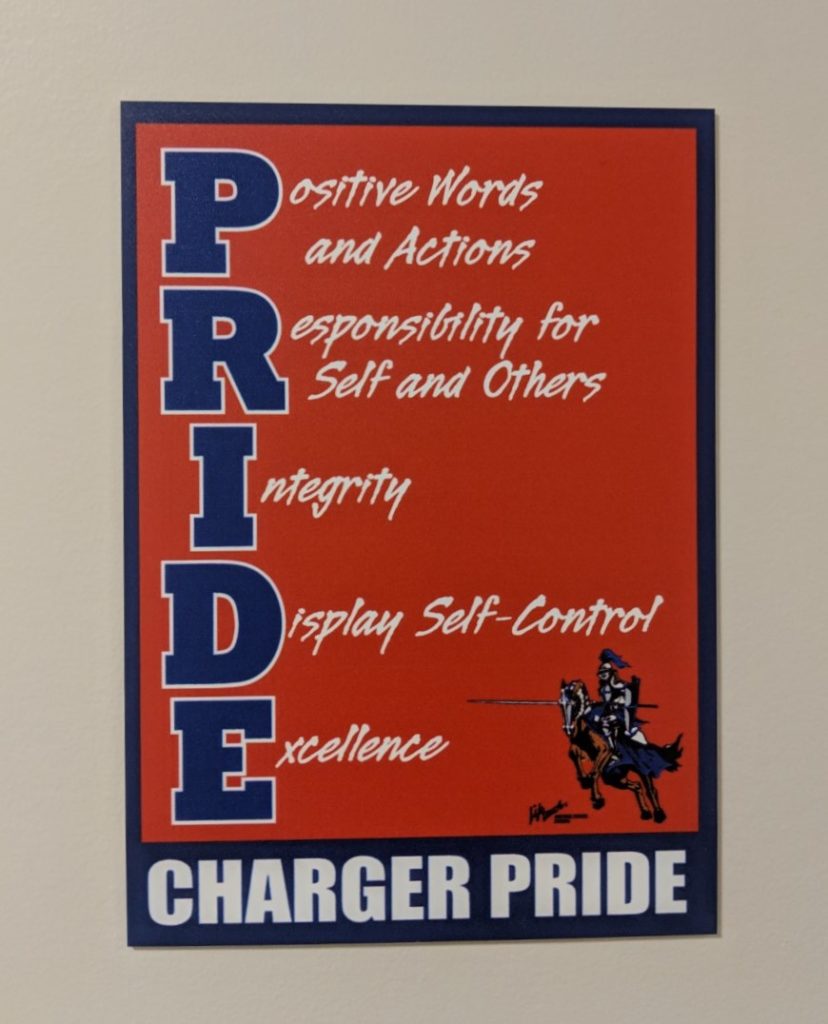Great Salt Bay’s Educator in Residence: Rachel
Hello! Rachel Lannino here, reporting live from Great Salt Bay Community School in Damariscotta Maine. Although this is my second year with the Leadership School, this is my first winter participating in the EIR program. Last winter I took a hiatus from Kieve to work as a full-time kids’ ski school instructor, and though I couldn’t resist working part-time for Sunday River this winter, I am so grateful to Kieve for the opportunity to participate in EIR and get more in-school experience. This winter I was placed at GSB, a K-8 school in Damariscotta with around 450 students, or around 60 students per grade. GSB has been a fantastic fit; I am enthralled with the caring, supportive staff and am grateful to my site mentor, Jill, for giving me an honest window into her life as a school counselor. Coming into this new experience I was hoping to shadow a school counselor in a K-8 school, because that role is currently my long-term goal. During our fall and spring programming at The Leadership School, most of our students are middle school aged, so it has been refreshing and rewarding to shift our TLS curriculum down the age spectrum and adjust it for my students in K-4.
Through EIR, I have enjoyed the freedom to develop my own schedule with all of the grades and to direct my focus towards areas of student development that I am most interested in. This winter I have helped run the K-4 Outdoor Education mornings that each grade participate in once a month. It’s been very fun to connect our local Mainers to their own woods by hiking through the woods behind our school, following animal tracks in the snow at the Damariscotta River Association, and completing team challenges while regulating our body temperatures in the frigid Maine winter weather! I also started small student lunch groups in a number of classes in order to (unknowingly for the students) facilitate and practice different social skills, such as listening to our classmates, asking relevant questions, waiting our turn to speak, and only sharing stories that relate to what others have said. Most of the students in my lunch groups already understand these basic social lessons, and each small group is actually tailored to help a few individual students practice relating to his or her peers and gain the skills for deeper human connection. One of my lunch groups with second grade girls includes a student who has a lot to say but doesn’t often listen to what her peers are saying. By reminding her that we don’t have conversations with other people simply to wait until it is again our turn to speak, she is learning how to continue a discussion by asking the other girls questions about their stories rather than changing the subject to what she wants to talk about. This lunch group feels very different from one of my fourth grade boys groups, where we are working on having a more cohesive classroom community. In that lunch group, we play Uno and Dominoes while catching up, to try to get all of the boys on an equal social playing field. Twice a week I run an after school program for 4th-6th graders; we have gone on many snowy hikes in the woods behind GSB, we have done a few different craft projects (channeling my inner art teacher!), and we have come together as a group through different challenges and games. It has also been a treat to go on class trips and see which types of experiential education are already built in to the curriculum (nutritional cooking in health class with the 8th grade, 5th grade trips to Kieve for climbing and snowshoeing around the peninsula, and learning how different animals stay warm in the winter at the Hidden Valley Nature Center with the 4th grade). The most rewarding work for me has definitely been the work I get to do one-on-one with students. I have daily check-ins with a second grader who needs more frequent breaks from the classroom; he and I usually do a walking lap inside the school (shaped like a square) and he tells me about what kind of day he is having. This little boy has quite a lot going on at home and it makes regulating his emotions pretty challenging for him. He and I have worked on self-regulation by noticing what he is doing when he feels a certain way and by practicing mindful breathing. Now he has this fantastically useful tool to help him in the classroom and at home when he starts to feel overwhelmed. Since he and I have started working together he has gotten so much positive feedback; gym used to be a struggle for him and now his PE teacher tells us what a great job he does of relaying his feelings to his classmates and keeping himself in check. I really think that me just listening to him and him knowing that someone is in his corner is doing a world of a difference for this child. He knows that my time at GSB is almost up because I have been preparing him for my departure, and Jill has promised to continue my work with him when I’m back at TLS. I’m going to miss my students very much when I leave, but that just means I must return next winter!
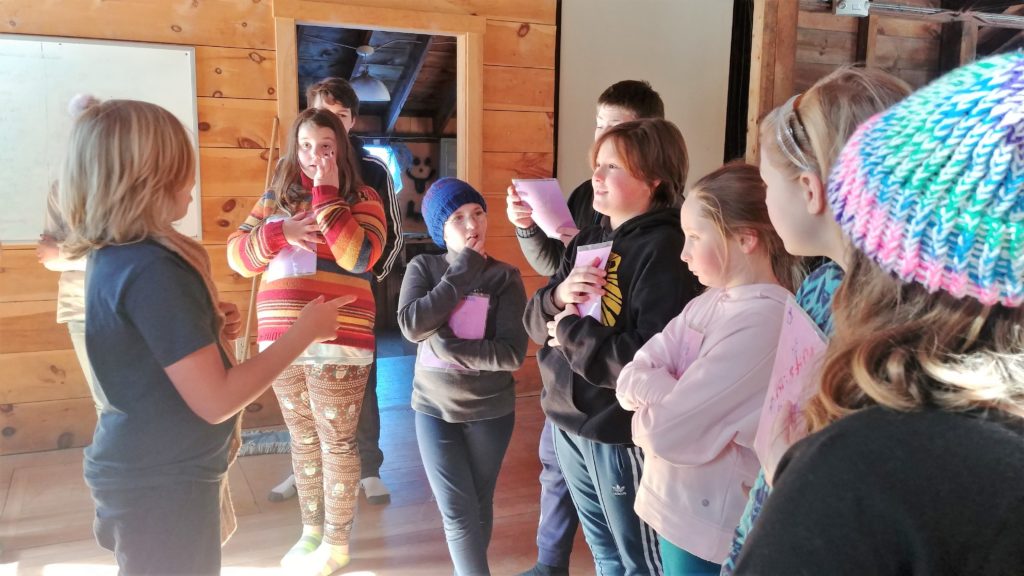
I’ve also spent a fair amount of time running TLS curriculum in the classroom, and it has been rewarding not only to see the students begin to open up with each other, but also to celebrate with the teachers when they see what their students can really do. By practicing experiential education in the classroom, we have built skills and discussed tools for self-regulation, conflict resolution, resilience, team building, decision making, communication skills, and empathy. One of my classes was particularly challenged by the activity Zoom, so we took a break and had a long discussion in the middle of the activity where the students were able to say anything and everything they needed to say to each other. After this discussion they tackled the challenge much more easily and the next day they came up with a long detailed list of things that they did better after they took a break. They talked about how they were treating each other and how they were talking to each other during this challenge. In a fourth grade class, I work with a teacher who will never cut off a debrief, or “carpet time.” When her students are having any emotional or social issues with each other she invests as much time as it takes for her students to process their thoughts and feelings and to share them with each other. These fourth graders have gained the ability to be vulnerable with their classmates because of the genuine love that their teacher is putting into their classroom community. After an activity that caused some disagreements, we all sat on her carpet for 40 minutes so the students could talk and listen to each other and truly understand what their classmates were going through during that challenge. It seems fitting to me that GSB has the word “community” in its name because the staff seem to truly care about their students; the students are welcomed into a warm, comfortable learning environment every day. From my first day in school this winter, the students welcomed me into the school community right away and consistently make me feel like a million bucks when I walk into their classrooms! I have learned so much about forming relationships with my students from the teachers and staff at GSB, and about how to mentor and provide guidance to the children in this community. I can’t thank Kieve enough for the opportunity to spend my winter at GSB.
Jefferson’s Educator in Residence: Brian
This Year my Educator in Residence position at Jefferson Village School has been amazing. I was nervous going into it because last year I put in so much work and by the end felt like the program should have been much further along. At JVS I put together my own schedule, any of the guidance classes, small group work, or one on one work that I do is during borrowed time from the teachers in the school. Last year, the JVS programs first year, it was hard to find teachers willing to give more than 15 or 20 minutes every day it was a struggle to find time with the general population of the students. This year, nothing could be farther from the truth. In January I was welcomed back with opened arms. I have my own class room and I work with 90 percent of the students at JVS for no less than 60 minutes a week most I get to work with for 115 minutes. Teachers are willing to give me however much time I think I need for the group process, and constantly talk to me about the change that they see in the students. The struggle of last year has been more than worth the payoff we’re receiving this year.
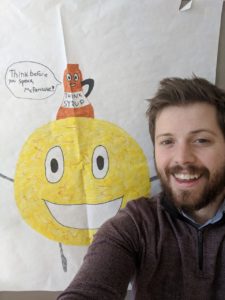
I spent some time last summer and fall working out curriculum for the guidance classes at Jefferson Village School. This curriculum focuses on three areas that we identified as “lacking” in the general population of students; self-awareness, social perceptiveness, and empathy. My goal has been to help the student culture at JVS to become more emotionally supportive through these classes. We teach these skills through playing games and analyzing the behaviors that arose and the emotions we felt because of them (kids are usually on board with the first part and less so with the second). In my larger classes, for the most part, I have seen growth in these areas; students seem more interested in helping each other and I hear more statements like “I felt like that too” and “I didn’t know that was making you feel that way.” Many of the kids seem eager to discuss these topics, I think most people enjoy feeling supported by their peers, and my classes have changed from a place to get out of social studies to a place where they compromise and collaborate (two words that have been corner stones of our conversations). It has been wonderful to watch the change.
Aside from the larger group classes I teach, I have also been able to take on smaller group and one on one skills classes this year. These classes usually include students who the school social worker has identified as needing extra emotional support or needing help in developing their own social-emotional skill set. The skills we work on range widely; decision making, coping with stress, and resiliency are a few of the more intricate ones. I believe this smaller group and one on one work is where I have seen the most growth in students this year. The small number of students allows the groups to flexible with activities, which in turn has allowed me to accommodate specific interests of the students. For example; just last week I had a student approach me in the hallway to tell me how making decisions in school is a lot like making decisions in Yu-Gi-Oh (which is a card game in which players duel monsters against each other). This is a student who historically has had trouble with the decision-making process as well as understanding and coping with the consequences that follow. It was amazing to listen to this student explain the seriousness of decisions he was making and comparing the consequences between his options. Yu-Gi-Oh worked for him but wouldn’t be as effective with a larger class.
I have loved my time at Jefferson Village School. It’s an eclectic group of students with very different values and needs. In the coming years I believe it is going to take a diverse group of teachers to keep up with those needs, I hope with all my heart that they can. The culture of this school and the surrounding area is in constant shift it’s hard to comprehend how the current administration keeps up with it. I know that the teachers at JVS and those of us at KWE that have worked with them care for these students dearly, supported by that love I know these kids can be successful. I wouldn’t have wanted to spend this EIR season with any other group of students and teachers, I cannot wait to see my seventh and eighth grade classes at The Leadership School this spring.

